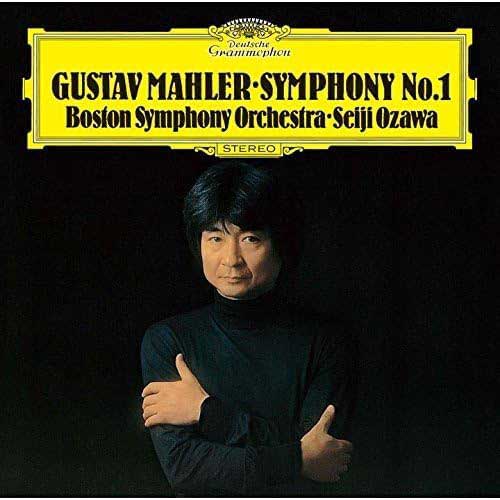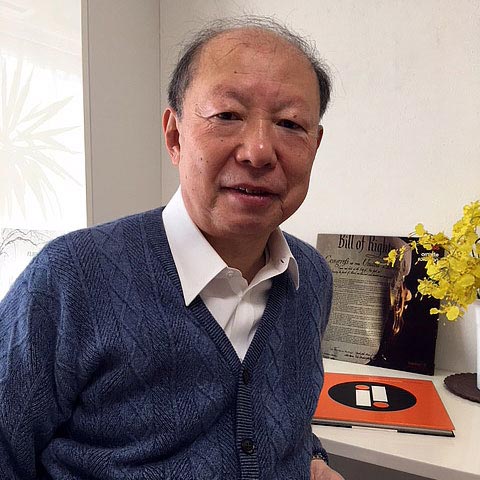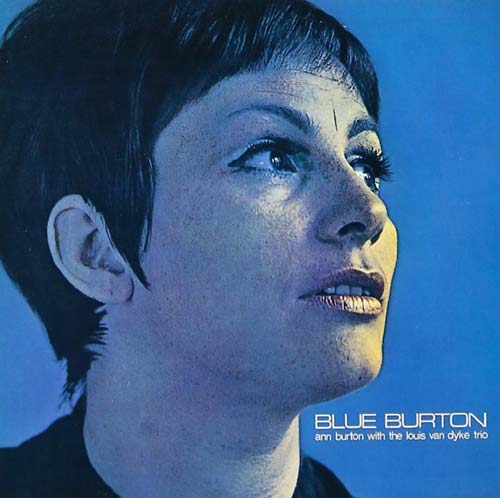Seiji Ozawa, world-renowned orchestra conductor passed away in February. Every time I look back on his brilliant achievements, I am reminded of how fulfilling his musical life has been. Among such albums, I selected some unforgettable ones from an audio point of view to commemorate the great maestro.
#244 Coupling of Two Masterpieces with Orchestra of Paris

Tchaikovsky: Symphony No. 4, Stravinsky: The Firebird / Seiji Ozawa, Orchestra of Paris
(Esoteric ESSW-90281~82)
As is often said, Seiji Ozawa attracted a lot of attention when he won the Besancon International Conductor Competition in 1959. Charles Munch was the chairman of the jury at that time. In the 1970s, Ozawa frequently served as guest conductor with the Orchestra of Paris, founded in 1967 with Munch as its musical director. Two masterpieces recorded by EMI in 1970 and 1972 with Ozawa conducting the Orchestra were coupled and re-released last fall (2023) by ESOTERIC in the SACD hybrid format. These were passionate performances by the young maestro, who was still in his mid-30s, and an orchestra that had just been established. We can listen to lively sounds of the time when Ozawa was rapidly gaining international fame and becoming the “Maestro Ozawa of the world” in the true sense.
Tchaikovsky composed his “Symphony No. 4” when he was 37 years old. Although this piece has intense emotional ups and downs that could be described as lamentation, at its core, we feel consistent dark lyricism unique to Tchaikovsky. The lyricism is rather heavy, even more tragic than lyrical, but the flow of the melody is solely natural, dark, and beautiful. The other piece is Stravinsky’s ballet music, “The Firebird.” This Firebird is not a “suite” as is often the case, but a “complete original version” with 46 minutes long compared to about 20 minutes of the suite, and has a larger orchestration. This work was written in 1910, when the composer was 27 years old, three years before he composed the famous <The Rite of Spring>, and “The Firebird” was the de facto work that made Stravinsky famous. Along with the colorful orchestration, Ozawa’s leadership in bringing out the nuance of each piece’s detailed instrument movements and delicate harmonies with outstanding beauty is genuinely magnificent. The newly mastered hybrid editions bring out the wonders of such orchestration even more.
#245 Mahler’s Symphony No.1 with “Blumine”

Mahler: Symphony No.1 “Titan” / Seiji Ozawa, Boston Symphony Orchestra
(SACD Universal Music UCGG-9514)
In 1973, Seiji Ozawa succeeded William Steinberg as the permanent conductor and music director of the Boston Symphony Orchestra. Since then, many great performances have been recorded on albums during the excellent relationship between Ozawa and the orchestra, which lasted almost 30 years. Among them, I listened again to Gustav Mahler’s Symphony No. 1, written between 1884 and 1888. Ozawa re-recorded the same symphony several times later, but this 1977 performance was the first recording. The symphony is usually performed in four movements, but originally, it was performed in five movements, with “Blumine” added.
“Blumine” was performed at the time of the premiere, but soon removed by the composer himself. Interestingly, they dared to add such a movement to their performance. While Mahler’s sound is complex and spectacular, it also has a childlike innocence. This symphony, written in his mid-twenties, depicts the struggles and dreams of his youth. Ozawa played the symphony slower throughout and portrayed Mahler’s world with solid expressions and grandeur. Recorded in 1977, it is a masterpiece of the analogue era, and this SACD single layer disc uses DSD masters remixed from the original 8-channel analog masters at the Emil Berliner Studios in Germany in 2012. Therefore, even the most minor details of Mahler’s complex music, even in sound quality, are clearly brought to life.
#246 Toru Takemitsu’s Masterpiece, Timeless Excellent Performance

Takemitsu Toru: NOVEMBER STEPS, etc. / Seiji Ozawa, SAITO KINEN ORCHESTRA
(Universal Music UCCD-45003)
Seiji Ozawa had a very wide repertoire. From classical to his specialty, French and modern works, he reads through every inch of the score, and the performances are all passionate and eloquent. Among such a diverse repertoire, Takemitsu’s collection of works left a particularly strong impression on me. Written for the New York Philharmonic’s 125th-anniversary concert in 1967, <November Steps> features an innovative attempt to pit the Japanese instruments Shakuhachi and Biwa against a Western orchestra. The New York Philharmonic with Ozawa gave the premiere performance of this piece at David Geffen Hall in the Lincoln Center for the Performing Arsts. Yokoyama Katsuya, an indispensable part of Takemitsu’s works, played the Shakuhachi, and Tsuruta Kinshi played the Biwa. Since then, many orchestras have performed this work as one of Takemitsu’s masterpieces. The performance in this album was recorded in 1989 and, of course, with Yokoyama’s Shakuhachi and Tsuruta’s Biwa.
The Saito Kinen Orchestra was formed in 1984 to commemorate the 10th anniversary of the death of Hideo Saito, Ozawa’s mentor. Since then, the orchestra has gained an excellent reputation worldwide. What's fantastic about Ozawa is that he can lead abstract-sounding pieces with many dissonances and create musical ideas that everyone can understand. In the second half, there is a cadenza with the two Japanese instruments, and Ozawa would be the only one who can maintain the suffocating tension in this part. One of the most enjoyable parts of the audio experience is listening to the lively breathing of the Shakuhachi, the sharp sounds of the Bachi (plectrum), and the clusters of the orchestra in real life. The album also features <A String Around Autumn> for viola and orchestra, which Takemitsu wrote in 1989 when he was growing into maturity.
About the Author

Masamichi Okazaki
Surrounded by various kinds of music from his childhood, Masamichi Okazaki joined Waseda University Modern Jazz Club. He started contributing articles to music magazines when he was a student. He covers wide range of music not only trad, modern and contemporary jazz, but also from pops to classics. He writes liner notes for CDs and LPs, and is a regular contributor to “JAZZ JAPAN,” “STEREO,” and others. He joined a big band, “Shiny Stockings,” as a saxophone player. He is a director of The Music Pen Club Japan (MPCJ).

